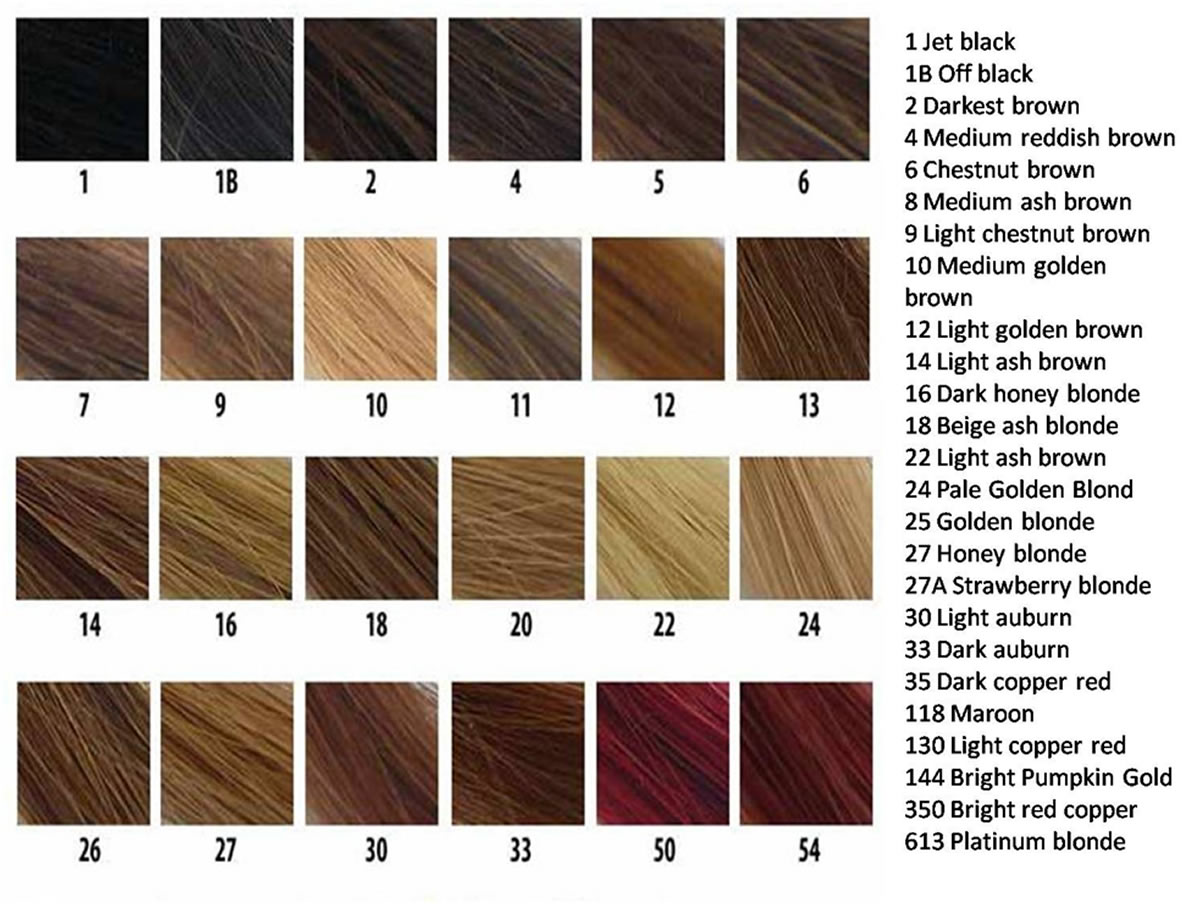Have you ever stared at a hair color chart, bewildered by the endless array of shades, unsure which one will make you glow? Finding the perfect hair color can be a daunting task, but it doesn’t have to be. With a little knowledge and a well-thought-out approach, you can confidently choose a hue that enhances your natural beauty and makes you feel your absolute best.

Image: www.pinterest.com.mx
The right hair color can subtly highlight your best features, brighten your complexion, and even make you feel more confident. It’s all about finding a shade that complements your skin tone, eye color, and personal style. This guide will break down the essentials of finding your ideal hair color, empowering you to choose with confidence and achieve your dream look.
Understanding Your Skin Tone
Your skin tone is the foundation for selecting the perfect hair color. There are three primary skin tone categories: warm, cool, and neutral.
Warm Skin Tones
People with warm skin tones often have golden or yellow undertones. They can easily tan and usually have freckles. These individuals look best with hair colors that have warm undertones, such as:
- Golden blonde
- Honey blonde
- Copper brown
- Auburn
- Red with golden highlights
Cool Skin Tones
Individuals with cool skin tones have pink or blue undertones. Their skin may burn easily in the sun, and they often have darker hair and eyes. They tend to look best with hair colors that have cool undertones, such as:
- Ash blonde
- Platinum blonde
- Dark brown with cool undertones
- Black
- Plum or burgundy with cool undertones

Image: answermediafaust.z19.web.core.windows.net
Neutral Skin Tones
People with neutral skin tones have a balanced mix of warm and cool undertones. They can wear both warm and cool hair colors without looking washed out. If you have a neutral skin tone, consider these options:
- Beige blonde
- Light brown
- Chocolate brown
- Dark blonde
Considering Your Eye Color
Eye color plays a vital role in selecting flattering hair colors. Here are some guidelines for each eye color:
Blue Eyes
Blue eyes are often complemented by hair colors that have warm or cool undertones. For a dramatic look, try brown or black hair. For a softer approach, consider blonde or golden brown shades.
Green Eyes
Green eyes stand out with warm tones. Consider copper, auburn, or honey blonde shades. Alternatively, cool-toned colors like ash blonde or darker browns can also be incredibly flattering.
Brown Eyes
Brown eyes are the most versatile when it comes to hair color. You can explore a wide range of shades, from light blondes to deep blacks, depending on your skin tone and personal preference. For a classic look, try dark brown or black hair. For a more subtle touch, consider caramel or chocolate shades.
Hazel Eyes
Hazel eyes are a unique blend of colors, offering flexibility in hair color choices. Warm tones, such as honey blonde or warm brown, will enhance the golden hues in your eyes. Cool tones, such as ash blonde or dark chocolate brown, will bring out the green or blue undertones.
Exploring Different Hair Coloring Techniques
There are various hair coloring techniques that can help you achieve your desired look, each with its advantages and disadvantages:
Highlights
Highlights involve adding lighter strands of hair, creating dimension and depth. This technique can brighten your complexion and add a subtle touch of color without drastic changes.
Lowlights
Lowlights are the opposite of highlights, adding darker strands that create contrast and contour. This technique can add fullness and dimension, making fine hair appear thicker.
Balayage
Balayage is a popular freehand highlighting technique that creates a natural, sun-kissed look. It involves painting streaks of color onto the hair, resulting in a gradual, seamlessly blended effect.
Ombre
Ombre is a technique that involves transitioning from a darker root color to a lighter shade at the ends. It offers a bold and dramatic look that is often associated with a rebellious and edgy style.
Tips for Choosing the Right Hair Color
Here are some additional tips to help you find the perfect hair color:
Start With a Consultation
Consult with a professional stylist. They can assess your skin tone, eye color, hair type, and personal style to recommend flattering shades and techniques.
Experiment Gradually
If you’re unsure about a drastic color change, start with subtle highlights or a temporary color to test the look.
Consider Your Lifestyle
If you have a busy schedule, choose a low-maintenance color that requires minimal upkeep.
Don’t Overdo It
Avoid using too much color, as it can look artificial and unnatural. Stick to subtle shades that enhance your natural beauty.
Maintain Your Hair Color
Use color-safe shampoos and conditioners to keep your color vibrant and healthy.
How To Find The Best Hair Color For You
Conclusion
Finding the best hair color for you is a journey of self-discovery, exploring different shades and techniques until you find the perfect match that makes you feel confident and radiant. Remember to consider your skin tone, eye color, and personal style, and don’t hesitate to experiment gradually with different options. With this comprehensive guide, you’re equipped to embark on your quest for the ideal hair color, transforming your look and enhancing your natural beauty.





